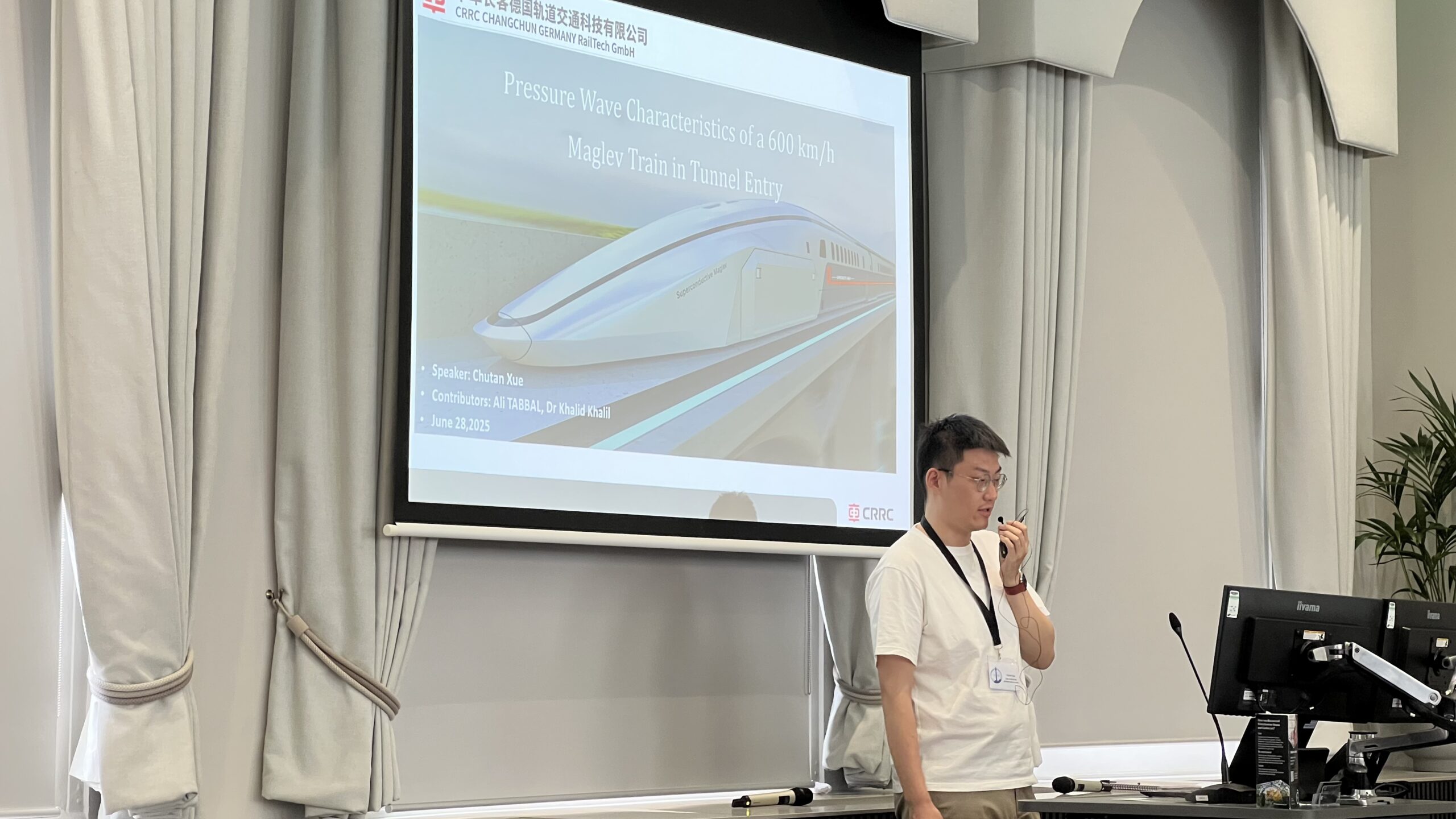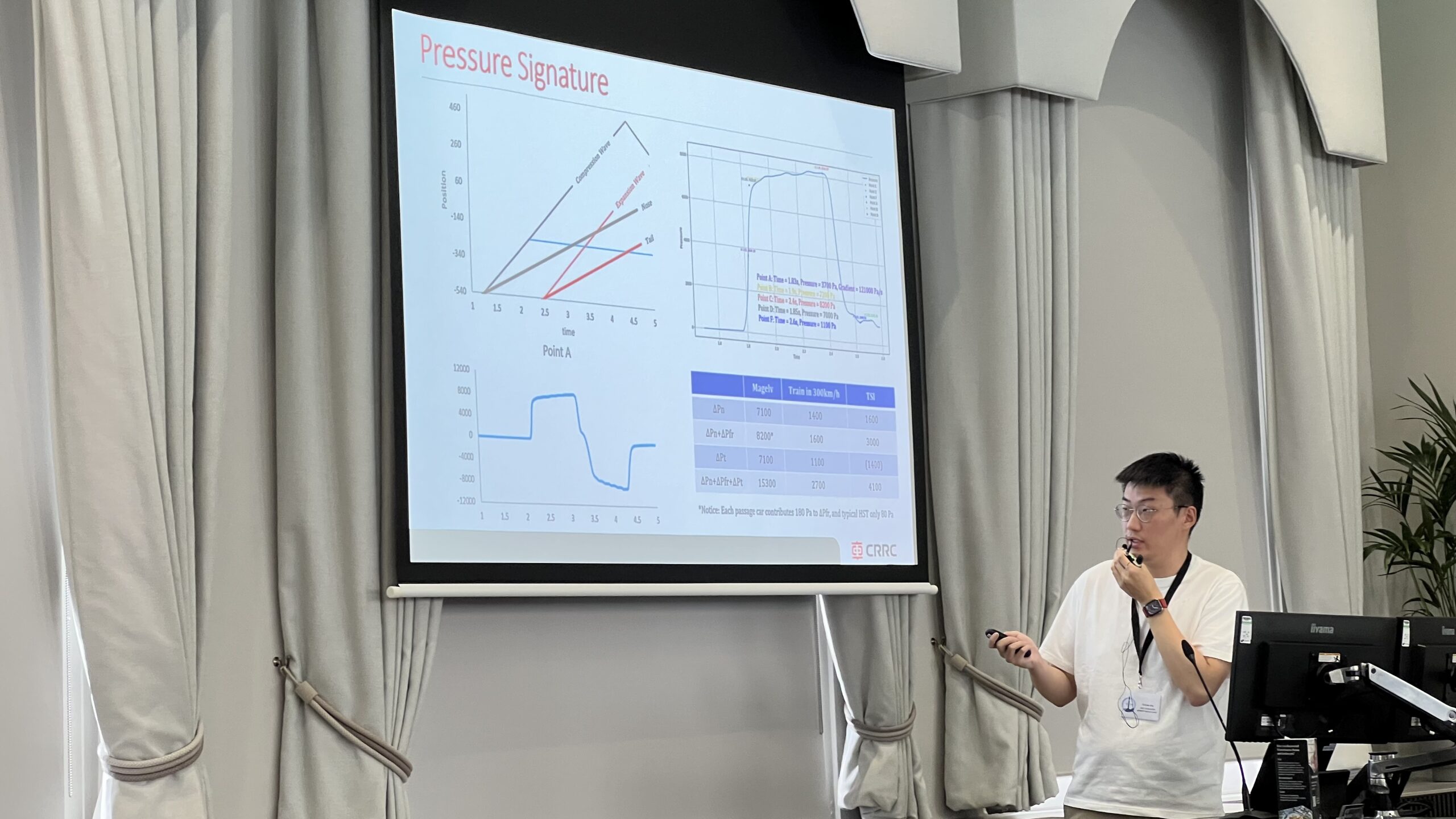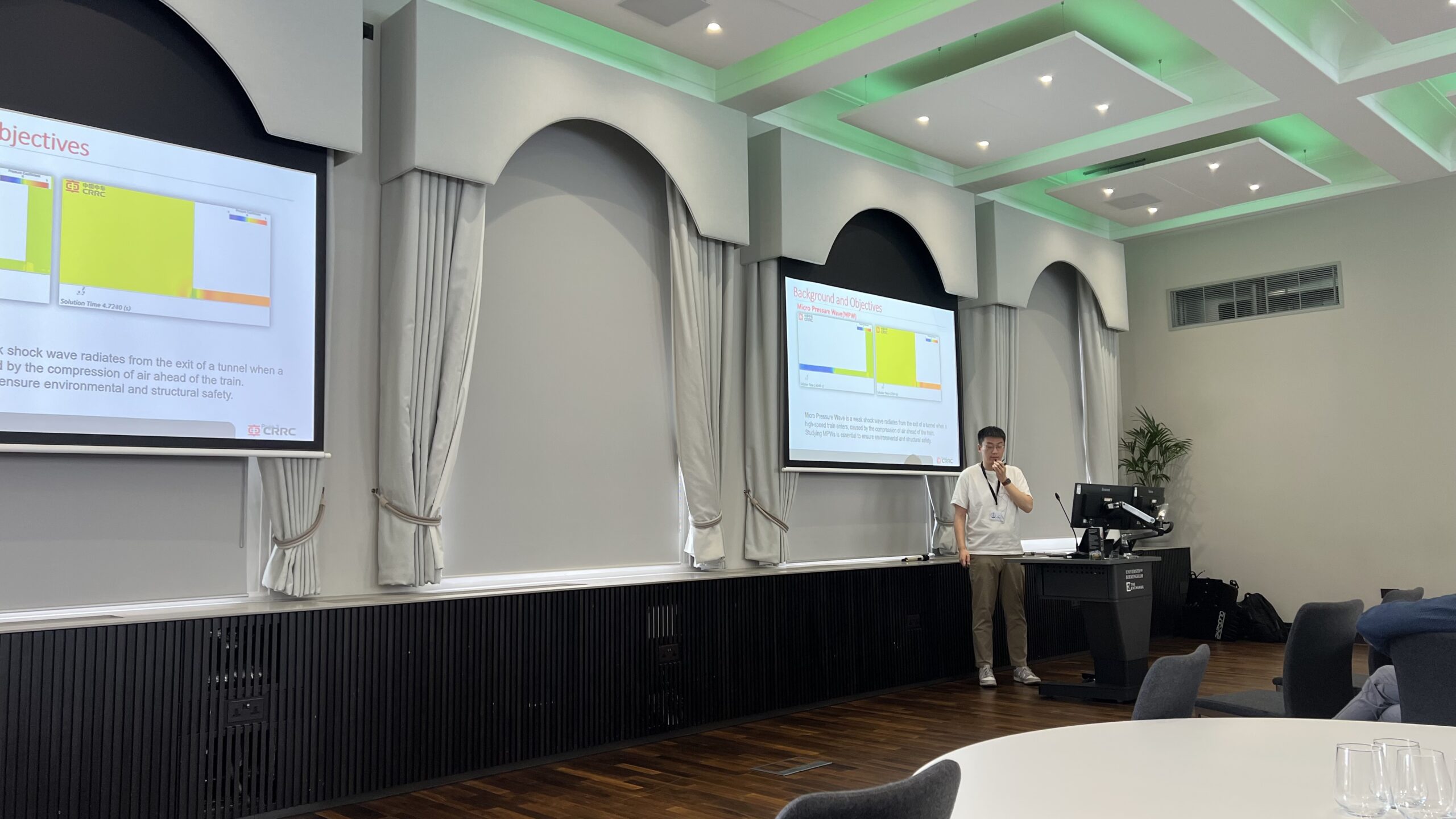Unsteady CFD analysis reveals strong piston effects and amplified pressure waves during tunnel entry – findings shared with global experts at the 6th Aerovehicles Conference

From July 1st to 3rd, 2025, our company participated in the 6th International Aerovehicles Conference, hosted by the University of Birmingham in the United Kingdom. The event is a leading technical forum focused on aerodynamic innovations in land transportation, bringing together researchers, engineers, and industry experts from renowned universities, certification bodies, and transportation technology companies across Europe, Asia, and North America.
The scientific committee included representatives from institutions such as TU Darmstadt, ISAE-ENSMA, Loughborough University, Chalmers University of Technology, Politecnico di Milano, BIT GmbH, Harbin Institute of Technology, and companies like Stadler Rail and Alstom. Notably, Prof. Chris Baker, a globally recognized authority in railway aerodynamics, served as one of the key scientific advisors of the conference, reaffirming the event’s academic depth and industry relevance.
At the conference, our Aerodynamics Engineer, Chutan Xue, delivered a technical presentation titled:
“Pressure Wave Characteristics of a 600 km/h Maglev Train in Tunnel Entry.”
The study employed high-fidelity unsteady CFD simulations to investigate the pressure wave behavior of an ultra-high-speed maglev train during tunnel entry. The results highlighted steeper wavefronts and stronger pressure amplitudes than those observed in conventional high-speed trains, driven by intensified piston effects at 600 km/h.
The presentation attracted strong attention from both academic and applied research participants, with several discussions focused on its implications for tunnel design, onboard pressure control, and infrastructure adaptation for next-generation maglev systems.
Our participation in Aerovehicles 6 reflects our ongoing commitment to international collaboration and to advancing aerodynamic research for the future of high-speed transportation.


